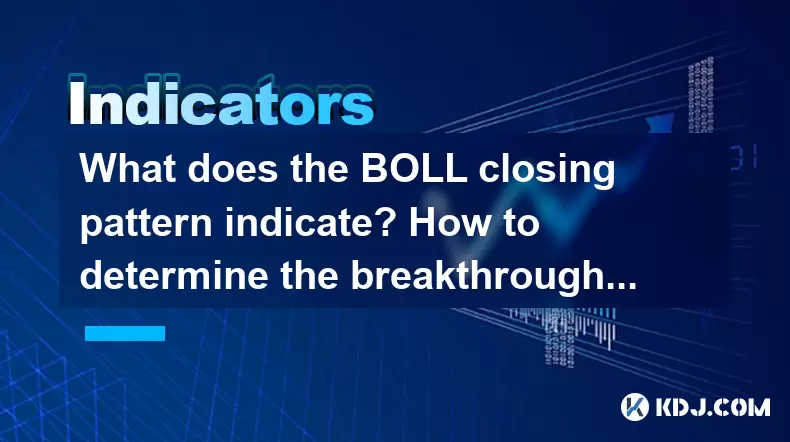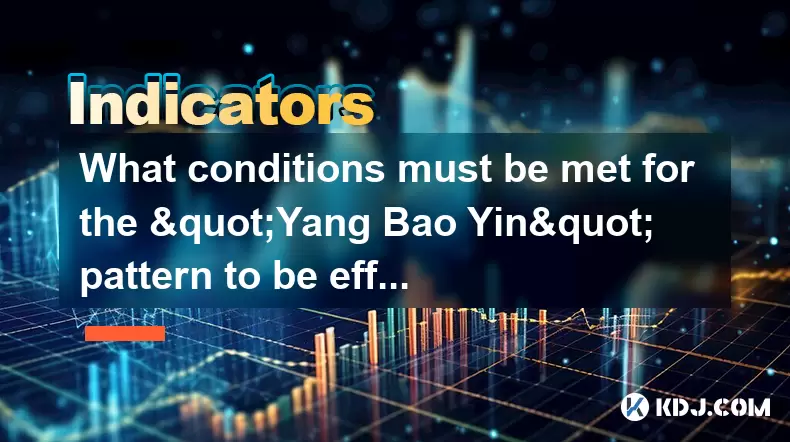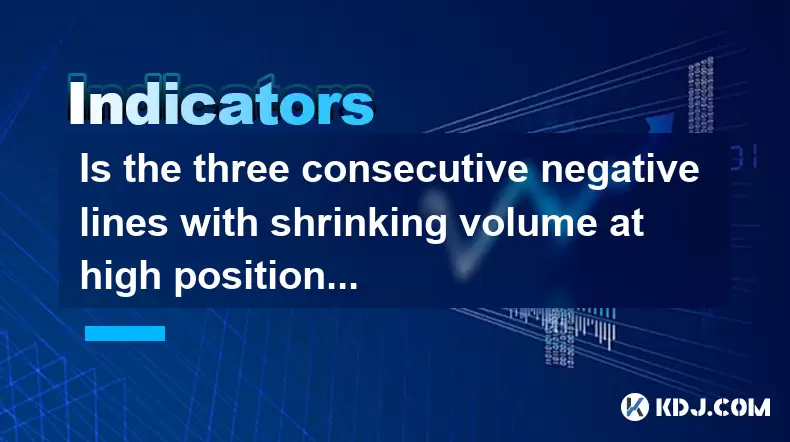-
 Bitcoin
Bitcoin $105,398.5023
1.75% -
 Ethereum
Ethereum $2,555.2076
3.43% -
 Tether USDt
Tether USDt $1.0004
-0.02% -
 XRP
XRP $2.1420
2.09% -
 BNB
BNB $651.8274
1.41% -
 Solana
Solana $146.6120
2.90% -
 USDC
USDC $0.9998
-0.01% -
 Dogecoin
Dogecoin $0.1773
3.19% -
 TRON
TRON $0.2715
0.86% -
 Cardano
Cardano $0.6350
1.86% -
 Hyperliquid
Hyperliquid $41.6576
9.72% -
 Sui
Sui $3.0264
2.34% -
 Bitcoin Cash
Bitcoin Cash $444.9663
11.29% -
 Chainlink
Chainlink $13.2560
2.72% -
 UNUS SED LEO
UNUS SED LEO $9.0324
1.94% -
 Avalanche
Avalanche $19.1824
2.67% -
 Stellar
Stellar $0.2586
1.47% -
 Toncoin
Toncoin $3.0063
2.58% -
 Shiba Inu
Shiba Inu $0.0...01205
4.59% -
 Hedera
Hedera $0.1580
3.52% -
 Litecoin
Litecoin $86.0051
4.95% -
 Polkadot
Polkadot $3.8023
2.34% -
 Ethena USDe
Ethena USDe $1.0005
0.01% -
 Monero
Monero $309.1882
1.96% -
 Dai
Dai $1.0000
0.01% -
 Bitget Token
Bitget Token $4.5486
1.61% -
 Uniswap
Uniswap $7.5266
8.36% -
 Pepe
Pepe $0.0...01113
5.10% -
 Aave
Aave $288.7607
8.66% -
 Pi
Pi $0.5784
4.89%
What does the BOLL closing pattern indicate? How to determine the breakthrough direction after a narrow range of fluctuations?
The BOLL closing pattern, based on Bollinger Bands, helps traders predict cryptocurrency price movements by analyzing closing prices relative to the bands.
Jun 13, 2025 at 04:43 am

What is the BOLL Closing Pattern?
The BOLL closing pattern is a technical analysis tool that traders use to identify potential price movements in cryptocurrencies. It is based on the Bollinger Bands (BOLL) indicator, which consists of a middle band being a simple moving average (SMA) and two outer bands that are standard deviations away from the SMA. The BOLL closing pattern specifically focuses on the closing prices of the cryptocurrency relative to these bands.
When a cryptocurrency's closing price consistently touches or closes outside the upper or lower Bollinger Band, it suggests that the market might be overbought or oversold, respectively. This pattern can be a signal for traders to anticipate a potential reversal or continuation of the current trend. For instance, if the closing price repeatedly touches the upper band, it might indicate that the asset is overbought and could soon experience a price correction.
Identifying the BOLL Closing Pattern
To identify the BOLL closing pattern, traders need to follow these steps:
- Set up the Bollinger Bands on your charting platform: Most trading platforms offer Bollinger Bands as a standard indicator. You can usually find it under the indicators or technical analysis section.
- Observe the closing prices relative to the bands: Look for instances where the closing price consistently touches or closes outside the upper or lower band. This can be done by reviewing historical data or real-time price action.
- Analyze the frequency and consistency: The pattern is more significant if the closing prices touch the bands multiple times over a short period. A single touch might not be as reliable.
Significance of the BOLL Closing Pattern
The significance of the BOLL closing pattern lies in its ability to provide traders with insights into potential price movements. Here are some key points to consider:
- Overbought and Oversold Conditions: When the closing price touches the upper band repeatedly, it indicates that the asset might be overbought. Conversely, repeated touches of the lower band suggest an oversold condition.
- Reversal Signals: The BOLL closing pattern can serve as a precursor to a price reversal. For example, if the price has been trending upwards and starts closing outside the upper band, it might signal that a downward correction is imminent.
- Continuation Patterns: In some cases, the pattern might indicate a continuation of the current trend. If the price continues to close outside the upper band after a brief retreat, it might suggest that the bullish trend will persist.
Determining Breakthrough Direction After a Narrow Range of Fluctuations
After a period of narrow range fluctuations, determining the breakthrough direction can be crucial for traders. The BOLL closing pattern can be particularly useful in this scenario. Here's how to approach it:
- Monitor the Bollinger Bands: After a period of narrow range, the Bollinger Bands will typically contract, reflecting the reduced volatility. This contraction is a precursor to an impending breakout.
- Watch for Price Action: As the price starts to move outside the narrow range, pay close attention to the closing prices relative to the Bollinger Bands. A closing price that moves above the upper band suggests a potential bullish breakout, while a closing price below the lower band indicates a bearish breakout.
- Confirm with Volume: Volume can provide additional confirmation of the breakout direction. A surge in trading volume accompanying the price movement outside the bands strengthens the signal.
Practical Example of Using the BOLL Closing Pattern
Let's walk through a practical example to illustrate how to use the BOLL closing pattern to determine the breakthrough direction after a narrow range of fluctuations.
- Identify the Narrow Range: Suppose you observe that Bitcoin has been trading within a tight range for the past few weeks, with the Bollinger Bands contracting.
- Monitor Price Action: As the price begins to move, you notice that it starts closing outside the upper Bollinger Band. This could be an early sign of a bullish breakout.
- Confirm with Volume: You check the trading volume and see that it has significantly increased as the price moves above the upper band. This confirms the bullish breakout signal.
- Take Action: Based on this analysis, you might decide to enter a long position, anticipating further upward movement in Bitcoin's price.
Combining the BOLL Closing Pattern with Other Indicators
While the BOLL closing pattern is a powerful tool, it can be even more effective when combined with other technical indicators. Here are some common combinations:
- Relative Strength Index (RSI): The RSI can help confirm overbought or oversold conditions indicated by the BOLL closing pattern. If the RSI is above 70 when the price closes above the upper band, it strengthens the overbought signal.
- Moving Average Convergence Divergence (MACD): The MACD can provide additional confirmation of trend direction. A bullish crossover in the MACD can reinforce a bullish breakout signaled by the BOLL closing pattern.
- Volume Indicators: Volume-based indicators like the On-Balance Volume (OBV) can help confirm the strength of a breakout. If the OBV increases alongside the price movement outside the Bollinger Bands, it adds credibility to the breakout signal.
Frequently Asked Questions
Q: Can the BOLL closing pattern be used for all cryptocurrencies?
A: Yes, the BOLL closing pattern can be applied to any cryptocurrency that has sufficient trading volume and liquidity. However, the effectiveness of the pattern may vary depending on the specific market dynamics of each cryptocurrency.
Q: How long should the narrow range of fluctuations last before considering a breakout?
A: There is no fixed duration for a narrow range of fluctuations. Traders typically look for a period of consolidation that lasts at least a few weeks. The key is to observe the contraction of the Bollinger Bands, which indicates reduced volatility and a potential upcoming breakout.
Q: Are there any risks associated with using the BOLL closing pattern for trading?
A: Yes, like any trading strategy, there are risks involved. False breakouts can occur, where the price briefly moves outside the Bollinger Bands but then reverses. Additionally, market conditions can change rapidly, and the pattern may not always predict price movements accurately. It's crucial to use the BOLL closing pattern in conjunction with other indicators and risk management techniques.
Q: Can the BOLL closing pattern be used for short-term or long-term trading?
A: The BOLL closing pattern can be adapted for both short-term and long-term trading strategies. For short-term trading, traders might focus on daily or hourly charts to identify quick breakouts. For long-term trading, weekly or monthly charts can be used to spot more significant trends and breakouts.
Disclaimer:info@kdj.com
The information provided is not trading advice. kdj.com does not assume any responsibility for any investments made based on the information provided in this article. Cryptocurrencies are highly volatile and it is highly recommended that you invest with caution after thorough research!
If you believe that the content used on this website infringes your copyright, please contact us immediately (info@kdj.com) and we will delete it promptly.
- Hyperliquid's HYPE token has reached a new all-time high
- 2025-06-14 11:20:13
- Introduction to Pump.fun Token Launch Progress
- 2025-06-14 11:20:13
- Introduction: The Dawn of Altcoin ETF Summer
- 2025-06-14 11:15:13
- Coinbase vs. Crypto.com - Which exchange is right for you?
- 2025-06-14 11:15:13
- The 50‑day moving average for Dogecoin recently dipped below the 200‑day
- 2025-06-14 11:10:12
- mETH Protocol Integrates with Hong Kong–based OSL to Expand Institutional Access to Liquid Staking
- 2025-06-14 11:10:12
Related knowledge

How to calculate the probability of trend continuation after the MACD column divergence?
Jun 14,2025 at 08:01am
Understanding MACD Column DivergenceThe Moving Average Convergence Divergence (MACD) is a widely used technical indicator in cryptocurrency trading. The MACD column, also known as the histogram, represents the difference between the MACD line and the signal line. When price makes a new high or low but the MACD histogram does not confirm this movement, a...

What are the volume requirements for adjusting the K line in the "rising three methods" pattern?
Jun 14,2025 at 07:50am
Understanding the 'Rising Three Methods' Pattern in Cryptocurrency TradingThe 'rising three methods' pattern is a bullish continuation candlestick formation that traders often use to identify potential upward momentum in cryptocurrency price charts. This pattern typically appears during an uptrend and suggests that the trend is likely to continue after ...

What conditions must be met for the "Yang Bao Yin" pattern to be effective?
Jun 14,2025 at 06:42am
Understanding the 'Yang Bao Yin' Pattern in Cryptocurrency TradingThe Yang Bao Yin pattern is a candlestick formation commonly observed in technical analysis within the cryptocurrency market. This pattern typically signals a potential bullish reversal after a downtrend. However, for this pattern to be effective and reliable, certain conditions must be m...

Is the three consecutive negative lines with shrinking volume at high positions a signal that the main force has finished shipping?
Jun 14,2025 at 09:56am
Understanding the Concept of Three Consecutive Negative LinesIn cryptocurrency trading, three consecutive negative lines refer to a situation where an asset's price chart shows three successive candlesticks with closing prices lower than their opening prices. This pattern typically indicates bearish sentiment in the market. When this occurs at high posi...

Is it an opportunity for the long positive line with large volume to break through the platform and then shrink back?
Jun 14,2025 at 04:42am
Understanding the Long Positive Line with Large VolumeIn technical analysis, a long positive line refers to a candlestick pattern where the closing price is significantly higher than the opening price, often indicating strong buying pressure. When this occurs alongside large volume, it suggests that market participants are actively involved in pushing t...

How to grasp the 60-minute KD oversold + 15-minute bottom divergence?
Jun 14,2025 at 06:15am
Understanding the 60-Minute KD Oversold SignalThe KD indicator, also known as the Stochastic Oscillator, is a momentum oscillator that compares a particular closing price of a cryptocurrency to its price range over a given time period. When analyzing 60-minute charts, traders often look for oversold conditions in the KD line, which typically occur when ...

How to calculate the probability of trend continuation after the MACD column divergence?
Jun 14,2025 at 08:01am
Understanding MACD Column DivergenceThe Moving Average Convergence Divergence (MACD) is a widely used technical indicator in cryptocurrency trading. The MACD column, also known as the histogram, represents the difference between the MACD line and the signal line. When price makes a new high or low but the MACD histogram does not confirm this movement, a...

What are the volume requirements for adjusting the K line in the "rising three methods" pattern?
Jun 14,2025 at 07:50am
Understanding the 'Rising Three Methods' Pattern in Cryptocurrency TradingThe 'rising three methods' pattern is a bullish continuation candlestick formation that traders often use to identify potential upward momentum in cryptocurrency price charts. This pattern typically appears during an uptrend and suggests that the trend is likely to continue after ...

What conditions must be met for the "Yang Bao Yin" pattern to be effective?
Jun 14,2025 at 06:42am
Understanding the 'Yang Bao Yin' Pattern in Cryptocurrency TradingThe Yang Bao Yin pattern is a candlestick formation commonly observed in technical analysis within the cryptocurrency market. This pattern typically signals a potential bullish reversal after a downtrend. However, for this pattern to be effective and reliable, certain conditions must be m...

Is the three consecutive negative lines with shrinking volume at high positions a signal that the main force has finished shipping?
Jun 14,2025 at 09:56am
Understanding the Concept of Three Consecutive Negative LinesIn cryptocurrency trading, three consecutive negative lines refer to a situation where an asset's price chart shows three successive candlesticks with closing prices lower than their opening prices. This pattern typically indicates bearish sentiment in the market. When this occurs at high posi...

Is it an opportunity for the long positive line with large volume to break through the platform and then shrink back?
Jun 14,2025 at 04:42am
Understanding the Long Positive Line with Large VolumeIn technical analysis, a long positive line refers to a candlestick pattern where the closing price is significantly higher than the opening price, often indicating strong buying pressure. When this occurs alongside large volume, it suggests that market participants are actively involved in pushing t...

How to grasp the 60-minute KD oversold + 15-minute bottom divergence?
Jun 14,2025 at 06:15am
Understanding the 60-Minute KD Oversold SignalThe KD indicator, also known as the Stochastic Oscillator, is a momentum oscillator that compares a particular closing price of a cryptocurrency to its price range over a given time period. When analyzing 60-minute charts, traders often look for oversold conditions in the KD line, which typically occur when ...
See all articles

























































































